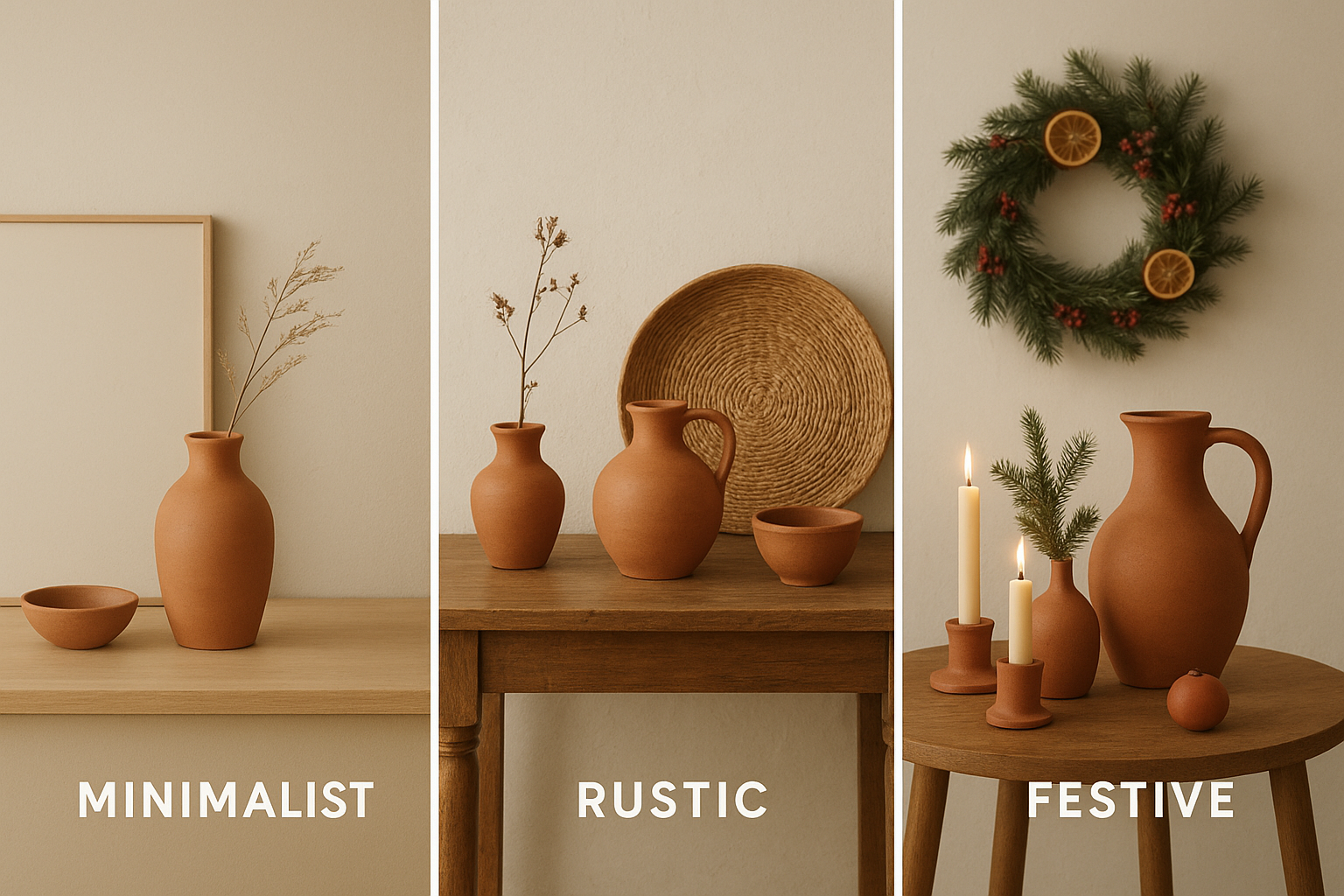Terracotta Tales: The Stories Behind Bengal's Terracotta Clay Crafts
Bengal, a land brimming with vibrant traditions and rich history, possesses a timeless art form that weaves stories through the very earth it is made of. Bengal's terracotta clay crafts, often heralded as a masterpiece of ancient artistry, transcend the boundaries of time and space, serving as a living testament to the region's incomparable heritage and artistic legacy.
Bengal's terracotta creations are not mere clay figurines; they are living embodiments of history, culture, and craftsmanship. Each piece carries with it a narrative that has been shaped by centuries of dynastic influence, artistic innovation, and unwavering devotion. These exquisite artefacts, from the smallest charms to the grandest temple facades, embody the soul of Bengal, capturing the essence of the land and its people.
In this blog, we invite you to embark on a journey that takes you back to the layers of time into the world of Bengal's terracotta.
Historical Roots
The origins of Bengal's terracotta clay craft dates back to over a thousand years, with influences from various dynasties that have ruled the region. The Pala Empire, which flourished between the 8th and 12th centuries, made significant contributions to the development of this art form. Temples and sculptures from this era exhibit intricate terracotta detailing, showcasing the unique blend of Hindu and Buddhist motifs.
Where Arts meets History
Bishnupur, a small town in West Bengal, is a veritable treasure trove of terracotta clay crafts. Here you will find a mesmerising fusion of history and artistry. The town is renowned for its exquisite terracotta temples and sculptures, dating back centuries. These intricate creations narrate tales of mythological deities and ancient legends, offering a glimpse into the region's rich cultural heritage. Bishnupur's terracotta art continues to captivate visitors, serving as a testament to the enduring legacy of this unique craft.
Traditional Techniques
The making of Bengal's terracotta artefacts involves time-honoured techniques passed down through generations. Local artisans skillfully mould the clay, typically collected from riverbanks, into various forms. After shaping, the pieces are left to dry in the sun, creating a robust foundation. Following this, the artisans meticulously etch intricate designs and motifs onto the clay using simple tools. The items are then baked in kilns to harden, ensuring their longevity.
The Symbolism
Each terracotta doll, idols , and other artefacts tells a unique story. From depictions of divine beings to scenes from ancient epics like the Ramayana and Mahabharata, the symbolism behind these artefacts is deep-rooted. The artistry often reflects the daily lives, customs, and beliefs of the Bengali people. A single piece of terracotta may narrate a mythological episode, depict the rural life of Bengal, or even serve as a charm to ward off evil.
Bengal's Terracotta Crafts Today
The terracotta craft of Bengal has transcended its traditional boundaries. In addition to temples, you can find terracotta art adorning homes and gardens. From decorative panels to garden sculptures, these pieces add a touch of Bengal's artistic heritage to modern spaces. In Bengal, you'll also find terracotta jewellery, home decor items, and pottery that draw inspiration from the age-old tradition.
Conclusion
Bengal's terracotta tales are a testament to the region's artistic prowess, and each piece carries with it a piece of history and culture. From its historical roots in temple architecture to contemporary applications, these terracotta artefacts continue to captivate the world with their rich narratives and intricate craftsmanship. To experience the stories behind Bengal's terracotta clay crafts is to delve deep into the heart of this vibrant culture and discover a living legacy that transcends time. Visit The Bengal Store to explore and own a piece of this timeless heritage to add a touch of elegance to your home decor.








